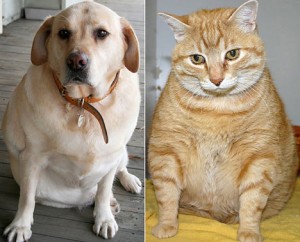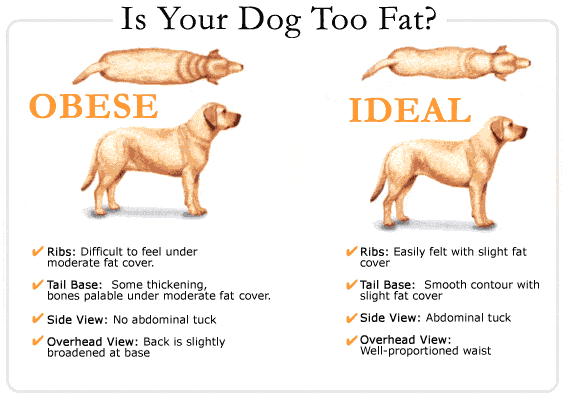By Jonit Barsky
The weeks after Maverick’s first steps were absolutely exhausting. As if we weren’t tired enough already! Maverick REALLY wanted to get up and greet people, get up and meet dogs and “help” with their therapy, especially when therapy meant lamb-flavored treats being handed out for jobs well done. He figured he’d done a darn good job just getting up and waddling over to them and that, of course, must mean a treat! Hilariously, he started to become a bit of a pain as he was constantly trying to get to his feet and help with someone’s therapy. It truly was easier when he wasn’t able to move! I didn’t have to worry about him getting in the way, getting bit, or walking on his upside down feet.
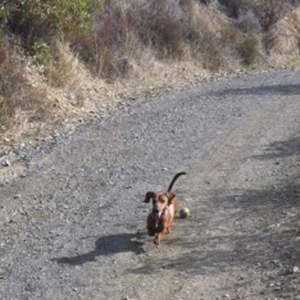
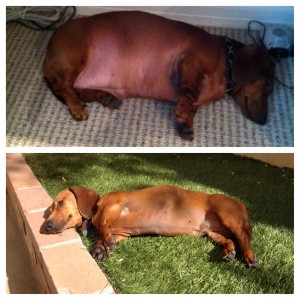
Rosie is the star of her scent-work class and recently learned how to swim. She’s a 4-year-old Dachshund who loves to hike and is obsessed with tennis balls. She is the queen of her household. She’s a true athlete, but it wasn’t always that way. These days Rosie is a svelte 13 lbs, which is less than half of what she weighed 2 years ago. When her owner adopted her from an elderly couple Rosie had been fed a diet that consisted exclusively of Chinese food and Beggin’ strips. 2-year-old Rosie could barely move. 4-year-old Rosie is full of life and has a great future ahead of her. That’s the effect of proper weight and exercise.
You may be like many of us, and think that a little extra pudge on your pet is cute, but think again. With 54% of dogs and cats in the United States classified as “overweight” or “obese”, all those extra pounds here or there are adding up to a big problem. Many factors contribute to obesity, from genetics to nutrition and exercise along with the psychology of overfeeding, but here’s why weight matters:
Health Concerns
Extra weight can have the same harmful effects on pets as it does in people. Fat (adipose tissue) acts like an endocrine organ, releasing chemical mediators called adipokines, which contribute to inflammation and prime the body for other inflammatory conditions like arthritis and cancer. Overweight pets are at a significantly increased risk to develop all of the following conditions:
- Degenerative Joint Disease (Osteoarthritis)
- Intervertebral Disc Disease (Slipped Disks in the back)
- Soft tissue injuries (Sprains, Strains)
- Kidney and Liver disease, Diabetes
- Heart and Respiratory disease, Elevated blood pressure
- Lower Urinary Tract Disease
- Dermatitis, Allergies
- Autoimmune and Endocrine Diseases
- Neoplasia (Cancers)
The bottom line is that chronically overweight pets have a life expectancy about 2.5 years shorter than those that are not overweight. What would you do to get more time with your pet?
Time For A Change
Many pets today lead an indoor-based lifestyle with less physical exercise and more palatable, calorie dense foods than they have historically. Also, early spaying and neutering slows their metabolism and reduces sensitivity to insulin. It is much easier for pet owners to be aware of these concerns and prevent weight gain than it is to combat extra weight, especially since the prevalence of obesity increases after 2 years of age. Some of the most important steps that pet owners can take at home are:
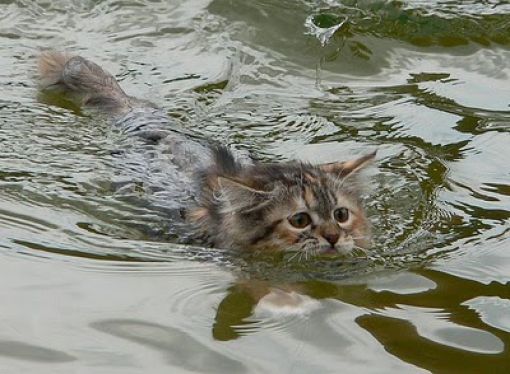
Regular exercise –Aerobic exercise burns calories, increases lean muscle mass and metabolic rate, relieves pain and alleviates boredom. Studies have shown that weight loss and low impact exercise can be as effective as medications in relieving pain associated with chronic arthritis. For your pet, this may mean daily walks or playing with toys, or working with a maze or puzzle for meals. Aquatic exercise in particular is extremely beneficial for initiating exercise therapy in obese pets. Utilizing water’s buoyancy makes movement more comfortable and safer for a deconditioned animal, particularly those with painful or unstable joints. Work with your veterinarian or rehab professional to help you formulate an appropriate plan for you and your pet.
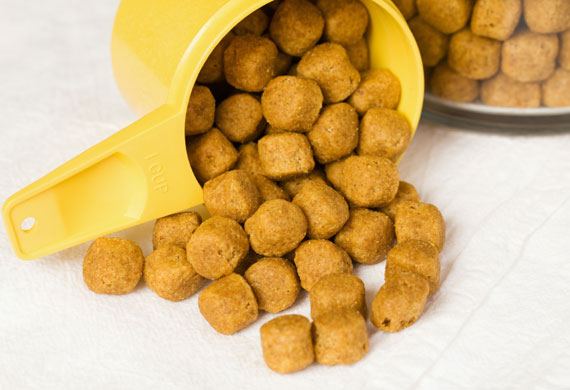
Measure your pet’s food – Being precise with the amount of food your pet receives is important – ingesting as little as 10 extra pieces of kibble a day for a month can lead to 1lb of weight gain or 10% increase in body weight for a small dog. In some cases, changes to the diet like eliminating treats, or switching to a high fiber, low calorie food might be necessary. Discuss diet changes with your veterinarian and make sure to always feed a nutritionally balanced diet. Feeding your pets small, frequent meals is the most appropriate strategy to boost their metabolism, and will help with preventing obesity as well as other medical conditions. Small, frequent meals can also be incorporated into more frequent exercise and playtime.
Weigh your pet at regular intervals and think of changes as a percentage of body weight, rather than just in lbs or oz. Also regularly feel your pet’s body over the ribs, spine and hip areas to monitor for changes. You should be able to feel these areas easily with only a thin coating of fat and muscle over them. If you have to push hard, Fluffy or Fido might be due for a diet.
Seek Help
If you are concerned that your pet might be overweight, make an appointment to see your veterinarian. Together you can determine your pet’s weight goals, rule out other contributing medical issues, and formulate a plan for weight loss. Maintaining a healthy weight for your pet may be one of the most important things that you do for their health and comfort. It certainly was a life-changer for Miss Rosie!
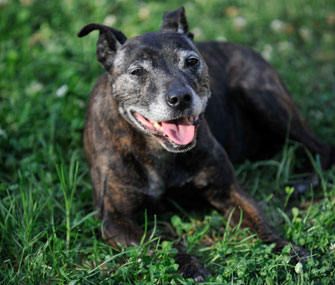
At Two Hands Four Paws, we are trained and experienced in meeting the needs of unique veterinary patients. Our weight loss programs have helped many dogs and cats reduce weight, improve fitness and realize a more active, injury-free lifestyle. In some cases, rehabilitation of overweight patients has resulted in the avoidance of orthopedic surgery or lifelong medications. Call, email, or stop by to learn about how we can help your pets on the path towards happier, healthier lives.
Resources:
Link to recent NYT article on pet obesity entitled “Roll Over, Fat Chance”:
http://www.nytimes.com/2013/09/26/garden/roll-over-fat-chance.html?_r=2&
Body Condition Score Chart:
http://www.purinaveterinarydiets.com/resources/Files/dog_chart.pdf
http://www.purinaveterinarydiets.com/resources/Files/cat_chart.pdf
The Association for Pet Obesity Prevention:
http://www.petobesityprevention.com
Ideas for ways to incorporate exercise into your pets day:
www.petfit.com
Ideas for toys to make pets exercise to get food:
http://pitlandia.blogspot.com/2013/05/top-10-food-dispensing-dog-toys.html
http://www.catfooddispensersreviews.com/category/cat-treat-dispenser-toys/

